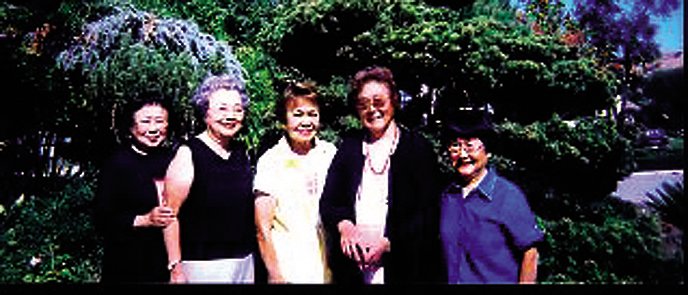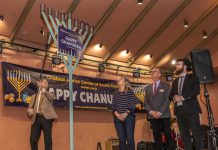Betsy Hatakeyama, 85, of Morgan Hill, and Marianne Ogawa, 86, of
Gilroy have known each other since long before their families were
forced from their childhood homes in Salinas and into internment
camps set up by the U.S. government in 1942.
Morgan Hill
Betsy Hatakeyama, 85, of Morgan Hill, and Marianne Ogawa, 86, of Gilroy have known each other since long before their families were forced from their childhood homes in Salinas and into internment camps set up by the U.S. government in 1942.
And they are still friends with three other Japanese-American women they grew up with in Silicon Valley, and who also experienced this exclusion firsthand.
“It’s a bond of friendship that dates back to kindergarten,” said Hatakeyama. “We were somehow connected, and as the years went by we got more and more connected.”
The longtime friends still get together once a month.
Sunday is the 67th anniversary of the Japanese attack on the U.S. Naval base in Pearl Harbor, Hawaii, which killed more than 2,000 people and catalyzed American involvement in World War II.
The assault also led to the forced relocation of more than 100,000 people of Japanese ancestry from their homes, mostly on the West Coast.
“We were frightened (when we heard about the Pearl Harbor attack) because we didn’t know how it was going to affect us,” said Ogawa, who had been in college in Los Angeles for only a couple of months by December 1941.
She and Hatakeyama were born in northern California. They had recently graduated from Salinas High School when the attack happened.
Less than a year later they were forced into internment camps in Arizona.
“They said it was for our own protection,” said Hatakeyama. “The camps were fenced in with barbed wire, and there were sentry towers. The soldiers in the towers were pointing their guns at us. They treated us like enemies.”
When President Franklin Roosevelt called Dec. 7, 1941, “a date that will live in infamy,” he wasn’t even alluding to this involuntary detention of thousands of American citizens he would soon authorize.
Roosevelt issued executive order 9066 early in 1942, giving the military broad powers to create domestic “exclusion zones” where no people of Japanese descent were allowed, even if they were American citizens. Virtually the entire state of California was classified as such a zone.
In 1988, Congress formally apologized for these actions, acknowledging the program was based on “race prejudice (and) war hysteria.”
Hatakeyama described how she, her parents, her three sisters and hundreds of other citizens and residents were gathered up and forced into an “assembly center” at the rodeo grounds in Salinas shortly after Roosevelt’s order.
“It was sad because the people could see their homes from the assembly center,” Hatakeyama said.
Families were given five days to get rid of everything they owned except for the bedding and clothes they could carry in their arms, Hatakeyama said. Her parents had just bought a brand-new Dodge sedan they had “slaved” for, but had to sell cheaply.
From the assembly centers scattered throughout the state, detainees were sent to internment camps, or “concentration camps” as Hatakeyama called them, to the east. Hatakeyama recalled how in August 1942 everyone at the Salinas center boarded a “hot, uncomfortable” train.
“We didn’t know where we were going,” said Hatakeyama. “The shades were drawn, and MPs were patrolling the inside of the train.”
She and her family ended up at a camp in Poston, Ariz. They were crammed into small shacks that were poorly constructed, with cracks in the walls that allowed the inside to fill with the desert’s dust.
They spent about a year in internment. Upon their release, they were given a list of cities they could move to, none of which were in California. Hatakeyama went to Chicago, where the people were “very, very nice,” and where she spent about a year.
Ogawa spent the same time period at another camp in Poston. She said the details are now hard to remember, but the relocation was “quite an experience.” After her family was released from the internment camp, they went to St. Louis, Mo., for a couple of years, and then she came back to California to finish college.
By 1945, Hatakeyama was married and raising her family in Fresno. When her husband retired more than 30 years later they moved to Morgan Hill.
Hatakeyama, whose husband passed away about a year ago, still has a letter of apology from President George H. W. Bush and a $20,000 reparations check from the federal government framed and hanging on the wall in her house.
“I believed in the Constitution,” she said. “We went to a red school house where we said the Pledge of Allegiance. We recited the preamble (to the Constitution). During wartime it meant nothing because the president could make his own rules.”















